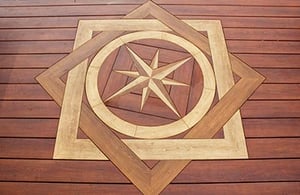.jpg?width=1800&name=rooftop%20deck%20baltimore%20bab%20(2).jpg)
3 Important Things to Consider When Building a Rooftop Deck Design in Chevy Chase, Bethesda, or elsewhere in Washington, DC
Building in a historical zone is always challenging, and when that build involves something like a rooftop deck, the logistics of the project become even more complicated. That being said, it’s entirely possible to create a stunning rooftop deck in the Washington, DC, or Bethesda historical districts; there are just some important things to keep in mind before the project gets under way.
You Probably Won’t Have Complete Control over Your Design
Home construction projects are extremely personal undertakings. These builds are usually labors of love that aim to improve the quality, functionality, and aesthetics of a home. It’s imperative to understand, however, that you might have certain design limitations imposed on you if you’re looking to build in historical districts of Washington, DC, or Bethesda.

For example, you might not have total control over the size of the structure or project, and you’ll likely have to build in a location that accommodates views. This means two things. One, you can’t obstruct existing views with your new structure, and two, any new structure in a historical area can’t be seen from the road or even from an alley. This helps preserve the look and aesthetic of the historical district.
If your home is on an alley, this restriction can be especially tricky because more people could potentially see your new structure, and your build will have to account for that.
Rooftop Deck Workarounds Are Possible
If you’re in a historical district in DC or Bethesda, don’t worry; it’s very likely you can still build your rooftop deck. You’ll just need to work with your professional build firm to ensure you’re in full compliance with historical district requirements.
Most often, this means three things:
1. Your rooftop deck will need to be low. In order to avoid anyone seeing your structure from below, you won’t be able to build a particularly tall deck or have a tall structure, such as a pergola.
2. Your rooftop deck will need to be toward the center of the house. Again, this eliminates the ability to see the structure when looking up.
3. Your rooftop deck will likely be relatively small. Because you can’t utilize vertical space and the deck will need to be centered to the house, your end structure will probably be smaller than one you could build on a comparable house that’s not in a historical district.
When building in a historical district, always work with a build firm that has experience in your specific area. Every district has different zoning requirements, and these relate to everything from how close you can build to the street to what materials are allowable. You want someone with experience navigating these zoning laws to ensure your project is strictly compliant while still being as close to your vision as possible.
When It Comes to Rooftop Decks, Plan for the Future
You undoubtedly want to enjoy your rooftop deck for years to come, which is why you should work with your build firm to determine what structure will be most lasting. To do so, keep these two factors in mind:
.jpg?width=300&name=selva-screened-porch-design-bethesda-maryland%20(3).jpg)
1. Pick materials that can stand the test of time.
Opt for durable materials that can withstand weather extremes, as well as general wear and tear. Remember, your rooftop deck will be exposed to lots of direct, intense sunlight, and that can quickly weather, warp, or discolor wood decking boards. Consider something hardier, such as tile, stone, or porcelain. These options don’t require as much maintenance as wood, they don’t get as hot, and they’re less likely to scratch or wear.
When choosing your materials, also think about what’s going to age well in terms of aesthetics. You’ll likely have this deck for many years, and you don’t want a color or material that will look dated or out of place just a few seasons down the line. Classic, neutral colors are always safe bets.
2. Consider roof access.
Again, because your rooftop deck will be there for years, it’s important to think about roof access. Depending on the type of roof, it will generally need to be replaced every twenty years or so. If your rooftop deck structure is entirely permanent (e.g., a wood structure), this means ripping off the deck in order to access and then replace (or repair) the roof. However, if you opt for something like a tile deck using a pedestal-style installation system, it’s possible to pull this up and to put it back down again if and when roof work needs to be done. This can save you a significant amount of time, money, and headache over the life of your deck.
When you’re looking to renovate your home, it becomes clear that living in a historical area within Washington, DC, or Bethesda comes with a series of tradeoffs. Yes, you get the beauty and historical import of the area, but you also have the burden of preserving that aesthetic when building something new. That’s why it’s so important to work with an experienced build firm that knows the zoning intricacies of your area. This can help ensure you get what you want out of your rooftop deck while still being fully compliant with all geographic restrictions.

